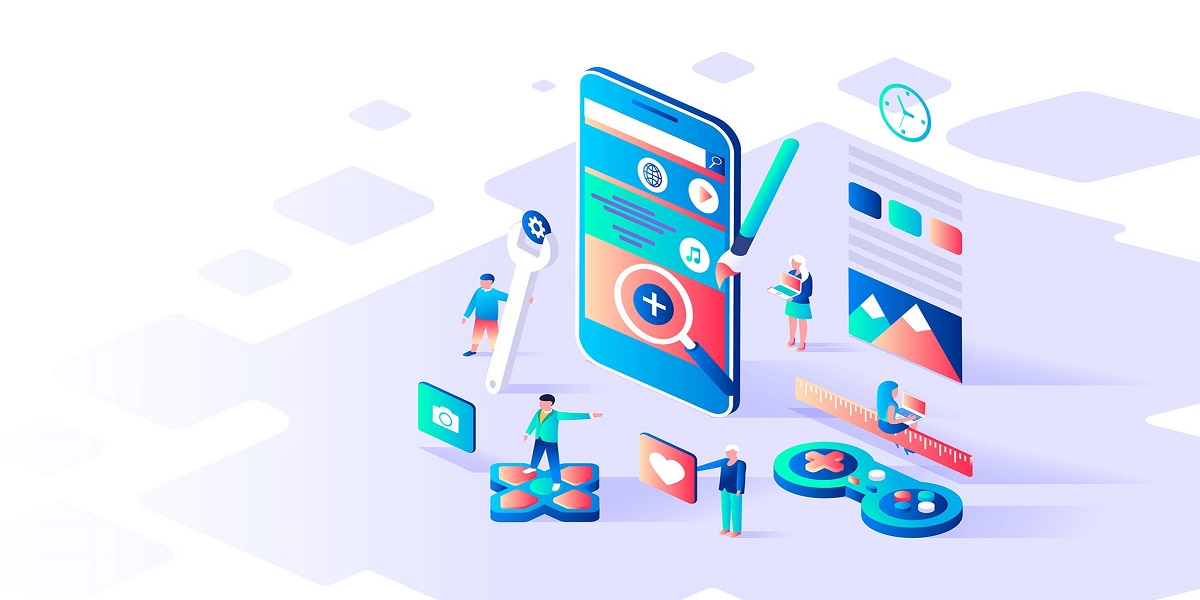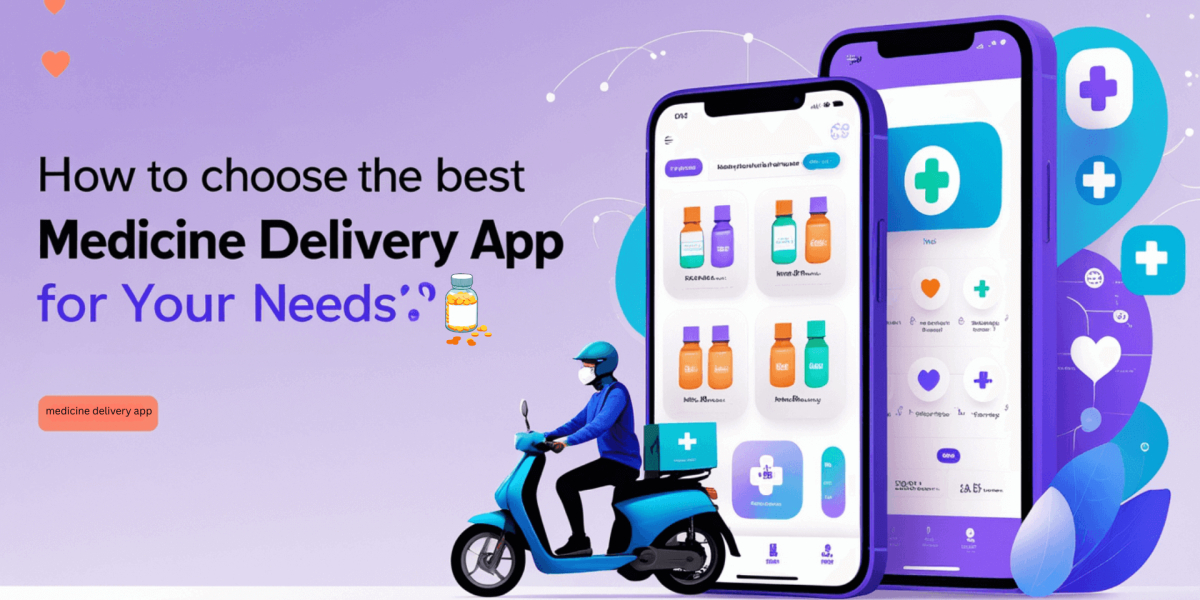Mobile App Development: Benefits, Challenges and Best Practices
- By Hemang
- 12-12-2023
- Mobile App Development

Mobile apps are now a huge, regular part of everyday life. We turn to them constantly to order meals, call rides, shop, bank, be entertained, and so much more. In many ways, apps have made things easier and more convenient.
Because of how vital apps have become, businesses have taken notice. Many companies are looking into creating their own apps as a way to better connect with their customers. Doing so presents real opportunities but also big challenges.
With millions of apps already out there, it's tough to make yours stand apart. Building an app takes careful planning and smart moves. In this article, we'll talk about the major advantages of apps for businesses and brands. We'll look honestly at the downsides and difficulties too. Finally, we'll share helpful tips for developing an app that wows users, keeps them coming back, and achieves your business goals.
By learning all angles of the landscape, you’ll have the insight to decide if an app makes good sense for connecting your company with the mobile-focused customers of today. Let’s explore further!
Unveiling the Benefits of Mobile App Development
Developing a custom mobile app may seem like a big task, but the payoff can be huge. Let’s explore some of the key ways apps provide value for all types of companies and brands.
Deepen Relationships with Customers
An app enables you to connect with customers intimately on their smartphones – front and center on a device practically glued to their hand! This consistent close access makes it simpler to build strong loyalty.
With push notifications, you can remind users about your app and share personalized offers, new features, or relevant content. These timely updates spark re-engagement.
In-app chat also provides instant support and service questions from users, without long wait times or confusing phone trees. This VIP treatment makes people feel valued and cared for. Satisfied, happy users spend more time in your app — and gladly choose it over rivals.
Access More Markets and Audiences
Unlike a physical store confined to a single area, an app lets you access and serve users regionally, nationally or globally. Your total addressable market and potential reach grows exponentially.
Apps also allow ultra-targeted marketing campaigns. You can tailor content and offer based user behaviors, transaction history, and other analytical insights from their activity in your app. This hyper-personalization makes every user feel understood and catered to. They serve users exactly what they want or need right now. This boosts response rates and conversion on upsells.
Message different user groups with customized campaigns too – whether it’s targeting high-volume users with VIP rewards or re-engaging dormant users with win-back offers. Segmentation powered by app data supports clever, strategic promotions.
Boost Revenue with Strategic Features
Certain app capabilities directly accelerate sales and profits. For example, enabling in-app purchases allows users to transact inside your app for virtual goods, premium digital content subscriptions, and more. Reducing checkout friction with saved payment credentials boosts conversion rates on these purchases.
An integrated e-commerce gateway inside your app lets users conveniently shop your entire catalog too. And easy access to deals, coupons, and flash sales right in the app environment can lift cart sizes.
It’s also simple to run all sorts of promotions via notifications and personalized recommendation feeds based on users’ app activity. Since people spend tons of time tapping and scrolling in apps, the monetization avenues are endless.
Streamline Operations, Save Resources
Apps create huge productivity upside internally too. They eliminate once lengthy manual workflows around inventory updates, HR onboarding, project coordination etc. Tedious tasks that before required extensive paperwork now happen seamlessly in seconds inside slick apps purpose-built for the job.
This automation and streamlining saves impressive money, time and effort across operations. Apps also connect co-located and distributed employees through instant messaging, file sharing, task collaboration and other features. This supports working together and handing off deliverables faster.
Overall, thoughtfully deployed apps empower teams to work smarter, quicker and more efficiently. They unlock performance gains that directly impact the bottom line.
Boost Brand Reputation and Credibility
Today, lacking some type of app presence can make you appear outdated or behind-the-times — perception-wise. Users have come to expect and demand mobile-friendly, personalized digital experiences from brands. Failing to deliver makes you seem irrelevant.
On the flip side, an innovatively designed, seamlessly functioning app tangibly boosts brand image. It signals that you’re progressive, in tune with user needs, and committed to convenience. This polished reputation differentiates you from the competition in a crowded market.
The halo effect of a best-in-class app cannot be overstated when it comes to cementing premium brand positioning.
In summary, mobile apps provide manifold tangible and intangible upside across customers, growth, finances, operations and brand value. But realizing these benefits requires overcoming very real development challenges...which we’ll tackle next!
Tackling the Challenges of Mobile App Development
While apps unlock tremendous upsides, realizing those benefits means confronting very real downsides too. Let’s explore several common mistakes in mobile app development:
Navigating the Diverse Mobile Landscape
With tons of device types, operating systems, screen sizes and network connections out there, app builders face tricky decisions:
- Should you build for both iOS and Android to cover more users? Or go iOS-only first?
- Can you maintain feature parity across platforms as updates roll out?
- How do you optimize interfaces for an endless array of screens and form factors? Phones, tablets, desktops, TVs...
Expanding to more platforms resolves access issues but spikes complexity fast. Yet limiting support cuts off segments of your audience. Strike the ideal balance given your capabilities and strategic roadmap.
Ensuring User Experience and Performance
Today’s consumers have little patience - apps get deleted swiftly if they disappoint. Crafting slick user experiences (UX) that “wow” is crucial for adoption and retention.
Factors like logical navigation flows, minimalist yet visually engaging designs, and intuitive interfaces profoundly shape UX - and user sentiment toward your brand. Eliminate clutter and friction points.
Performance is equally vital - 43% of users abandon apps taking over 3 seconds to load. Laggy operation is intolerable. Ensuring speedy response times, seamless page transitions, crisp visual feedback and more across varying devices and connections is tough but table stakes.
Managing App Development Costs and Resources
Brace yourself, because mobile apps carry serious price tags. Just developing an initial version can cost anywhere from $10,000 to $150,000+. Complex apps with extensive features, custom animations etc. rack up far higher bills.
Post-launch, tack on operating expenses for security, ongoing enhancements, marketing and user acquisition too. Serious financial planning is a must to fund the build and sustain apps long term.
Secure talent and partners to avoid budget shocks. Assign project managers to contain scope creep. Balance ambition with pragmatism feature-wise. These moves help control expenses and complications.
Maintaining App Security and Data Protection
App security breaches have swelled 300%+ since 2020. Weak defenses let hackers access sensitive user data like identities, transactions etc. Legal exposure and reputational ruin follows data incidents.
Prioritizing rock-solid security protections in your app’s underlying infrastructure is essential - encrypt stored data, enforce access controls, transmit info securely. Testing code thoroughly for vulnerabilities is equally key before launch. User privacy should be treated as sacrosanct.
Embracing Continuous App Updates and Maintenance
An app cannot compete if it remains static after launch. As user expectations evolve, it is vital to consistently offer updates and new features.
Plan roadmaps to, among other things, repair bugs, enhance speed, and add features. Solicit feedback from users to help select priority areas. In congested app stores, apps with new content and sophisticated optimisations stand out.
Continuous improvement may necessitate substantial resources, but it is the most effective approach to create and maintain an app that customers actually like using in the long run.
To realize mobile's full potential, numerous decisions about platforms, development, costs, privacy, upkeep, and other considerations must be made. Overcoming the barriers, on the other hand, is well worth the effort!
Finally, let's look at best practices for making your app a success.
Embracing Best Practices for Successful Mobile App Development
Creating mobile apps necessitates meticulous planning and putting the user first. We can set our apps up for success and ensure they genuinely engage with the people we want to serve by keeping some important best practices in mind from the outset.
Defining Clear App Goals and Objectives
Before diving into development, it's important to think about what goals you have for your app and what you want it to do.
Key questions to ask: Who is it for and what value will it provide them? Will it showcase your brand or directly sell products and services? Is it supporting a campaign or enabling self-service? Does it offer utilitarian tools or user community features?
Defining the core purpose and objectives at the outset gives your team direction and focus as they start designing and building. It also makes it easier to decide what functionality is most important to include.
Conducting Thorough Market Research and User Analysis
Research is crucial! The more you know about who will use your app, what they need and want, and their behaviors the better. Gather demographic info - age, location, tech savviness levels. Build empathy and understanding through surveys, focus groups and interviews.
Ask about their pain points and wishes. See what motivates them emotionally. Studying competitor apps can further reveal gaps your app could fill. Test early app concept ideas and prototypes directly with target users. Let their feedback guide design and development.
Adopting a User-Centric Design Approach
Centering the user experience (UX) is key to mobile app success. Put yourself in users' shoes. Flows should mirror natural thought sequences. Interactions should feel frictionless and intuitive, almost like the app knows what users need before they do!
It is all about creating an experience so cohesive that it feels like the app was made just for them. UX testing early and often with target users refines things iteratively. Little delights and personal touches also lend stickiness.
Leveraging Agile Development Methodologies
Traditional rigid development models don't work well for apps. Mobile moving fast! Agile methods are best suited, promoting collaboration, continual user testing, incremental enhancements and quick pivots.
Launch a basic but functional first version (MVP) to get market traction and feedback. Then builds up with improvements over time. This way new features and updates align to real user needs versus assumptions. And you can adapt quickly to tech shifts or user requests.
Implementing Effective App Testing and Quality Assurance
Apps deal with complex technology and real-time usage, so rigorous stability, functionality and UX testing is a must across diverse operating systems and devices. Manual and automated testing uncovers edge case issues.
Tracking key performance metrics highlights problem areas needing work. Ultimately comprehensive testing ensures apps work like a charm for users under varied conditions, leading to confidence and loyalty.
Conclusion
Look, it's clear mobile apps have tons of potential. They can help your business in so many ways – more money, happier customers, working smarter. But we gotta be real, getting there ain't easy. Building an app takes hard work and smart thinking.
So what should you do? Most important rule is keep your users in mind. Every step of the way, ask "how Can we make life awesome for the people using this?" Brainstorm new ideas that'll help them out. Design an app that's super easy and fun to use. Update things constantly to fix problems and add neat features.
Following the crowd won't get you far. You gotta stand out with an app that feels different and special. Solve problems for folks that no one else has figured out. Surprise people by making their lives a little brighter. Do all that, and you'll have a hit on your hands!
It ain't simple, but success never is. Roll up your sleeves, think outside the box and build something great. Consult with top mobile app development companies. Stay humble and keep improving. If you make your users happy, the rest will fall into place. Now get out there and create an app folks can't live without! The world's just waiting for your ideas.

.png)
.jpg)


